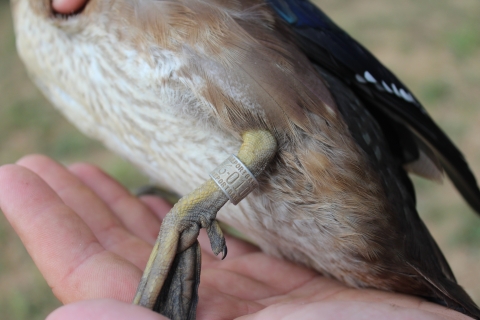What We Do
The Morgan Brake National Wildlife Refuge achieves its goal of conserving wildlife by managing wildlife habitat. Management activities on the refuge focus on moist-soil management, water management, forest management, as well as public hunting and fishing, invasive species invasive species
An invasive species is any plant or animal that has spread or been introduced into a new area where they are, or could, cause harm to the environment, economy, or human, animal, or plant health. Their unwelcome presence can destroy ecosystems and cost millions of dollars.
Learn more about invasive species control, research, education and interpretation.
Approximately 1,110 acres of former agricultural lands are actively managed for migratory birds including waterfowl, shorebirds, secretive marsh birds and wading birds. The resulting habitats provide birds with a diverse array of wetland areas for foraging, nesting and resting throughout the year. Moist soil plant production is one management technique commonly utilized to provide foraging habitat for migratory waterfowl during the fall/winter.
The wood duck banding program administered by the U.S. Fish and Wildlife Service is critical in determining annual estimates of harvest and survival rates. Wood duck banding on refuges is a very important component in the management of this popular waterfowl species. Biologists depend on banding data from hunter harvested wood ducks to set daily bag limits each year.
The restoration and management of bottomland hardwood forests provides habitat for sustainable wildlife populations including migratory birds, threatened and endangered species, and game species. Forest management activities include reforestation, pre-commercial treatment and commercial timber harvest. Forest management is currently conducted Complex wide in accordance with an approved Forest Management Plan that is designed to meet wildlife habitat objectives. The plan emphasizes activities that protect, restore, and manage the functions and values of the forest to support viable populations of native flora and fauna, consistent with sound biological principles. Priority is given to management activities for federal trust species such as migratory birds. Forest management prescriptions include timber stand improvement, commercial timber harvest, and reforestation.


